mobile View, to the German Version tap the flag


- also: Galiza
- Autonomous Region of Spain
- 9th to 11th cent. Kingdom of Galicia
- to 1833 nominal Kingdom as a part of Spain
• Flag
• Historical and other Flags
• Meaning/Origin of the Flag
• Coat of Arms
• Historical Coats of Arms
• Meaning/Origin of the Coat of Arms
• Map of the autonomous regions of Spain
• Map of the historic Kingdoms on the Iberian Peninsula
• Numbers and Facts
• History
• Origin of the Country's Name
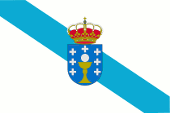
since 1984,
Flag of Galicia,
ratio = 2:3,
Source, by: Flags of the World






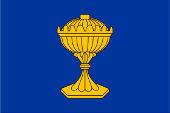
16th century,
alleged flag of the Kingdom of Galicia,
Source, by: Wikipedia (ES)



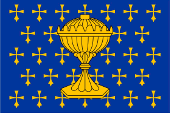
16th century,
alleged flag of the Kingdom of Galicia,
Source, by: Wikipedia (ES)



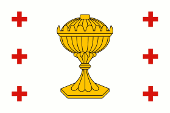
18th century,
Flag of the Kingdom of Galicia,
Source, by: Wikipedia (ES)



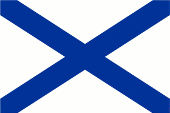
1845–1891,
Flag of the province of La Coruña,
ratio – ratio = 2:3,
Source, by: Wikipedia (ES)




from 1891,
Flag of the province of La Coruña,
ratio – ratio = 2:3,
Source, by: Wikipedia (ES)




1977–1984,
Flag of Galicien,
ratio – ratio = 2:3,
Source, by: World Statesmen



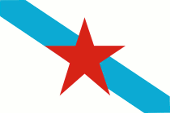
Flag of leftist local nationalists,
ratio – ratio = 2:3,
Source, by: Wikipedia (EN)




The current flag of Galicia was introduced on 29th of May in 1984. It is plain white with a diagonal blue diagonal bar. It goes back to the historical maritime flag of the city and province of La Coruña. From 1845 onwards, it showed a blue diagonal cross on a white background, but in 1891 it was reduced to a diagonal right bar to avoid confusion with the Russian naval flag. White and blue are considered the colours of the Virgin Mary. In the centre of the flag is the coat of arms of the country with a royal crown above it. Coats of arms from the early days of the kingdom are not known, the country was annexed to Castile-Leon in 1071, but the country remained a nominal kingdom until 1833. The first coats of arms appeared in the 13th century. They show one or more golden chalices on a blue background. It is assumed that the coat of arms was subsequently interpreted as "speaking", because the Spanish word "Cáliz" means chalice, so a chalice was assumed to be the country's symbol of Galicia. From the 15th century onwards, the chalice was depicted as a host chalice (ciborium) because the vessel in the coat of arms was associated with the exceptional privilege of Lugo Cathedral to display the host or body of Christ in public. From the 16th century onwards, golden crosses were scattered around the coat of arms. The heraldic banners, the predecessors of today's flags, will have been depicted in a similar way. Reliable flag representations have existed since the 18th century; here the flag is white, shows the chalice in the middle and three red crosses to the left and right of it. This is surprising because these colors differ significantly from those of the coats of arms used at the time. Under the government of General Franco (1936-1975), all regional flags were banned. After Franco's death (1975), the regional flags were reintroduced, also in Galicia, albeit unofficially at first, since Galicia did not have autonomous status until 1981. However, the flag did not bear a coat of arms until 1984. In most autonomous regions of Spain, the more recent flag history already began in the years before the granting of the autonomy statute with a flag without a coat of arms, because the coats of arms had often not yet been decided. Nevertheless, it has mostly been accepted that the flag with the coat of arms is to be used by the regional authorities or on official occasions and the flag without the coat of arms is to be used quasi for private, decorative purposes. The regulation "The colours of the flag of Galicia" of 16th of February in 2022 regulates the colours of the flag and specifies the following Pantone shades: Light blue = pt 801, middle blue = pt 300, red = pt 186, gold = pt 3975. Left-wing political groups seeking independence for Galicia use the flag of Galicia without the coat of arms, but with the addition of a red, five-pointed star in the centre.
Source:
Wikipedia (ES),
Wikipedia (GL),
Flags of the World,
Volker Preuß


since 1984,
Coat of arms of Galicia,
Source, by:
Wikipedia (GL)


13th century,
Coat of arms of Galicia,
Source, by:
Wikipedia (ES)

15th century,
Coat of arms of Galicia,
Source, by:
Wikipedia (ES)
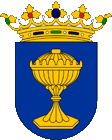
16th century,
Coat of arms of Galicia,
Source, by:
Wikipedia (ES)

16th century,
Coat of arms of Galicia,
Source, by:
Wikipedia (ES)

18th century,
Coat of arms of Galicia,
Source, by:
Wikipedia (ES)

The current coat of arms of Galicia was introduced by law on 29 May 1984. The coat of arms is dark blue and shows a golden communion chalice, a silver host and seven silver crosses with the same arms. Above this is a royal crown. The coat of arms is based on older versions of the coat of arms of Galicia. There are no known coats of arms from the early days of the kingdom. The land passed to Castile-Leon in 1071, but Galicia remained a nominal kingdom until 1833. The first coats of arms appeared in the 13th century. They show one or more golden chalices on a blue background. It is assumed that the coat of arms was subsequently interpreted as "speaking", because the Spanish word "Cáliz" means chalice, so a chalice was assumed to be the national symbol of "Galicia". From the 15th century onwards, the chalice was represented as a host chalice (ciborium), because the vessel in the coat of arms was associated with the exceptional privilege of Lugo Cathedral to display the host or body of Christ in public. From the 16th century onwards, golden crosses were scattered around the coat of arms. Their shape kept changing, but at some point the number of crosses was fixed at seven, representing the seven historical provinces of the country: Santiago, Betanzos, Mondoñedo, Tuy, Lugo, Orense, La Coruña. From the 18th century onwards, the host chalice appeared as a tabernacle. Today's coat of arms is in this respect recognisable as a product of modern times, because it unites the chalice of the communion cup of early heraldry with the seven crosses of the 18th century.
Source:
Wikipedia (ES),
Wikipedia (GL),
Volker Preuß

The autonomous Regions of Spain:
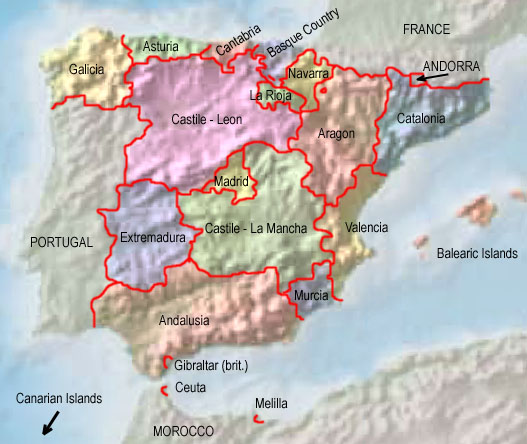
Source: Freeware, University of Texas Libraries, modyfied by: Volker Preuß

Map of the historic Kingdoms on the Iberian Peninsula (ca. 1220):
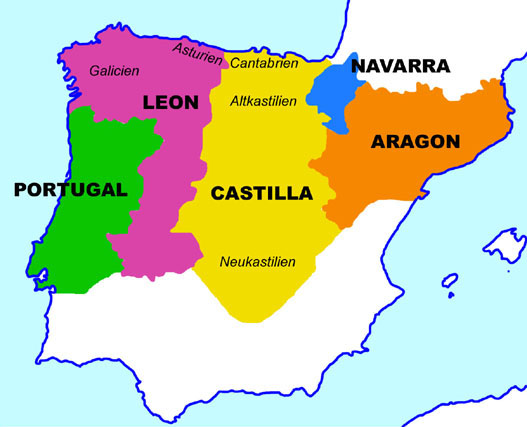
Map: Volker Preuß

Area: 11.418 square miles
Inhabitants: 2.696.161 (2022), Galicians and Castilians
Density of Population: 236 inh./sq.mi.
Capital: Santiago de Compostela, 98.179 inh. (2022)
official Languages: Spanish (Castilian), Galician (Galician: Galego, span.: Gallego)
other Languages: Portugese
Currency: Spanish (Euro) currency
Time Zone: GMT + 1 h
Source: Wikipedia (DE)

early age · settlement by Iberians
ca. 600 B.C. · immigration of Celts, mix with the Iberians, evolution of the Celtiberians (among them the tribe of the Gallecians)
218–201 B.C. · Second Punic War, the Roman Empire acquires the possessions of Carthago in Iberia, subjugation of whole Iberia until the year 19 B.C., Roman settlement, romanization, the today’s Galicia comes to the Roman province of Hispania Tarraconensis
ca. 400 A.D. · Great Transmigration (Migration Period), immigration of Alans, Suebs and Western Goth
ca. 410 · establishment of the Empire of the Suebs in the today’s Portugal and Galicia under King Hermerich
411 · the Empire of the Suebs becomes a West-Roman federate
583–583 · legacy and throne succession wars
585 · the Empire of the Suebs becomes conquered by the neighbouring Western Goth
711–714 · annihilation of the Empire of the Western Goth by from northern Africa coming Arabs, the Western Goth retreat to Asturia
716 · arrival of the Arabs in Galicia, but the country becomes not occupied, not affiliated to the Emirate of Cordoba and not populated by the Arabs
813 · in the town Compostela were found the remains of Apostle St. Jacob (Spanish Santiago)
882 · Prince Pelayo of Oviedo (Asturia) liberates the town Leon from the Muslims and occupies whole Galicia, establishment of the Kingdom of Oviedo
910 · death of King Alfons III. of Oviedo, division of his empire under his sons, his son Garcia I. becomes King of Leon, his son Ordoño II. becomes King of Galicia, his son Fruela II. inherits Asturia
914 · death of King Garcia I., his brother King Ordoño II. of Galicia inherits Leon
914–924 · reign of King Ordoño II. of Galicia and Oviedo (Asturia)
924 · death of King Ordoño II., the heritage comes to King Fruela II. of Oviedo (Asturia), he transfers his residence from Oviedo to Leon, the country is named Kingdom of Leon from that point in time
931–950 · reign of King Ramiro II., a son of Ordoño II., unification of Galicia, Asturia and Leon under one crown (Kingdom of Leon), successful wars against the Arabs, expansion of the empire
1037 · vanish of the Pelayo dynasty, the Kingdom of Leon inherits King Ferdinand of Castile, Castile and Leon become united under one crown
1060–1071 · Galicia is momentary an own kingship again under Don García, after that it comes back to Castile-Leon (resp. Spain)
1808–1813 · Galicia is occupied by French troops
1833 · the until that point in time in Spain existing partial kingdoms and regions become divided in provinces, the Kingdom of Galicia in the provinces of Lugo, Orense, Pontevedra and La Coruña
1936–1939 · Spanish civil war, Galicia fights on the side of the troops of General Franco against the socialistic central government
28th of April 1981 · Galicia gets the statute of autonomy within Spain (by summary of the provinces of Lugo, Orense, Pontevedra and La Coruña), establishment of the "Autonomous Community of Galicia"
Source:
Wikipedia (ES),
World Statesmen,
Volker Preuß

The name "Galicia" has its roots in the Celtiberian tribe of the Gallecians (Callaicians too) which lived here. The Romans called this tribe "Callaici" and the country "Gallaecia". That name continued as well under the rule of the Suebs and Western Goth and was however changed in the years to the today’s "Galicia". The Eastern European region of Galicia is easily confused with the Spanish region of Galicia because of the same spelling in English.
Source: RetroBib Retrobibliothek, Volker Preuß


![]()

































